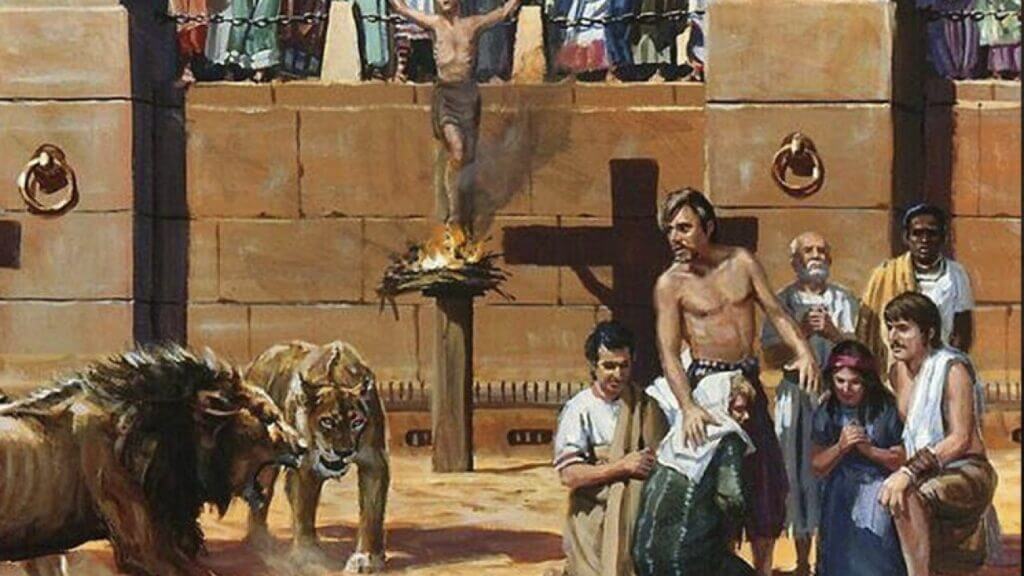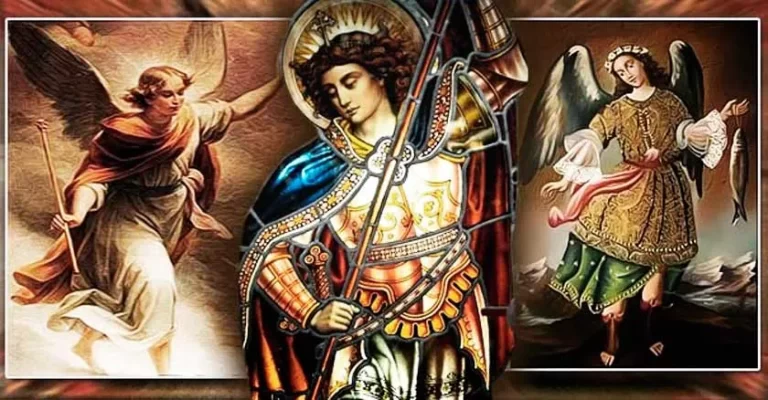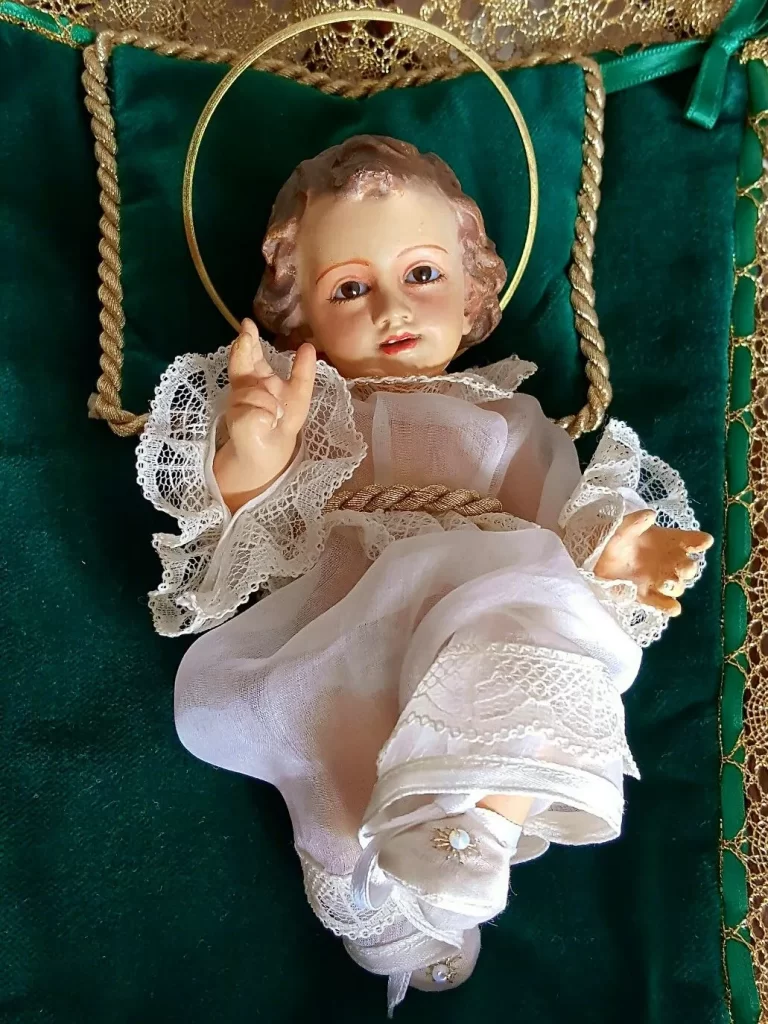Act of the Martyrs discover their belief!
Act of the Martyrs, do you know it? Do you know what she is about? , if your answer is No, then you will find the indicated article to know what the Act of the Martyrs is, what is its importance, how they are classified and more, here.
What is the Act of the Martyrs?
The Acts of the Martyrs are the documents that outline the process and death of the martyrs, we can from this beginning infer that it is about all the writings and manuscripts that were prepared as proof of the experience lived by the apostles, those people who were closely learning and sharing the life of Jesus, in his passage through the earth, however, it is much more about the documents that validate Christianity.
Why are they called the Act of the Martyrs instead of the Act of the Apostles? , it is because for the time in the Greek language “martyr” means witness, being the apostles the main witnesses of the life of Jesus, they were called “martyr”.
Based on its history and the evident and proven persecution that was carried out on Christians and also the persistence despite putting his life at risk, for taking the word of God to all corners, the word martyr was deriving its meaning for refer to people who were able to bear witness with their blood and today the word martyr is used to refer to anyone who is capable of giving his life to maintain his ideals.
As we can then suppose, we also speak of the Act of the Martyrs, but this document is made up of all those writings that allow us to know about the result of the life and work of these people who had the honor of sharing part of their lives with our today. Father Jesus Christ, they tell about those who evangelized and believed in his word and who were not necessarily part of the group of apostles.
The Acts of the Martyrs are all the writings that were made in the official processes, which were prepared by the court notaries of the time, in which the Christian martyrs were prosecuted. But still, knowing their destiny, why were these people capable of giving their lives to bring the word of God? Because in principle it was a request made by Jesus Christ so that the scriptures would be carried out and be evangelized and it is found in the Acts chapter of the verse 1 to 8.
This writing says it clearly, you can read it in the bible of your choice, we will paraphrase what is said there: “1 In the first treatise, oh Theophilus, I spoke about all the things that Jesus began to do and to teach, 2 until the day that he was received up, after having given commandments by the Holy Spirit to the apostles whom he had chosen; 3 to whom he also, after having suffered, he appeared alive and spoke to them about the kingdom of God.
4 And being together, he ordered them not to leave Jerusalem, they should wait for the promise of the Father, which they had heard from him. 5 Because John baptized with water and they would be baptized with the Holy Spirit. 6 Then those who had assembled asked him, saying, Lord, will you restore the kingdom to Israel at this time? 7 And he said to them: No, it is up to you to know the times or the seasons, which the Father put in his sole power; 8 But you will receive power when the Holy Spirit has come on you, and you will be my witnesses in Jerusalem, and in all Judea and Samaria, and to the ends of the earth .
As we can recognize in the writings of Acts, the Lord Jesus Christ entrusted them with the evangelization of the word of God, which would be divine because they would be guided by the Holy Spirit. Despite the fears in fulfilling what was requested, because they partially knew the destination, they had to face the times and seasons that the Father had given them.
Based on the aforementioned, we can then define the Act of the Martyrs as any document that narrates the trial and death of the martyrs. There are several editions of the documents and the one published by the Bollandists is recognized as one of the best quality.
The Bollandists are a group of ecclesiastical scholars who have dedicated themselves to editing the Acts, generating a collection that begins in the early years of the seventeenth century and continues to this day. They are known as Bollandists because they were the collaborators and successors of Bolland, who edited the first volume. The works generated by this group of scholars are Acta Sanctorum, Bibliotheca hagiographical Latina, Bibliotheca hagiographical graeca and Bibliotheca hagiographic Orientalis.
Origin of the Act of the Martyrs
As we have previously indicated, the Act of the Martyrs are all the documents that were written during the trials carried out on the Christians, they were the official acts that originated during the processes that prosecuted the Christians and ended up condemning them. These documents were written by notaries of the court chancellery and kept in the archives.
The chancellery of the court was also related to the court of the proconsul, so these acts were also known as Acta proconsularia. Depending on their origin and writing, there is a classification of the types of records that were generated, some allow us to recognize the hagiographic character in them, that is, the biography of a saint is recounted, while other documents refer to the passions in the which you can even recognize a text that can become edifying.
Other minutes include narratives that are foreign to the true process, however, they feed on information and strengthen the story. We must keep in mind that “passio” is a Latin word, which derives from the Greek word “pati” which translates as suffering, this clarification is made, so that you can understand the true context of the “actas passio” and also when we We refer to the passions. We will comment on the classification of the minutes later.
We already know where the Acts of the Martyrs come from, however, it is appropriate to point out that the number of acts does not correspond even close to the number of processes and martyrs, much of this documentation was even intentionally destroyed, the small number of existing acts , can be based on the order given by Diocletian in the year 303, in which he ordered the destruction of the existing sacred books in the churches, so it is assumed that the records were also destroyed.
There is no evidence that after that, the churches have taken on the task of trying to restore the heritage of the destroyed hagiographic texts. Then to this must be added all the subsequent events, among which we can point out the Germanic invasions of the West during the 5th and 6th centuries, which must also have contributed to the loss of the writings.
Classification
Although the acts of the martyrs are not a number that is reconciled with the number of processes carried out, there is a significant number of hagiographic texts, in which the diversity of processes that gave rise to them confer a variety to the documents, as well as a certain value that makes it necessary to classify them.
In principle, the foundation of the authenticity that the described process corresponded to a true martyr was used for the classification of the minutes of the martyrs, however, this foundation was not at all useful, nor did it provide referential value to the minutes of the martyrs. martyrs. Then, a classification was made based on the characteristics of the object of the story, for which a division of the acts arises in which the Acta Passiones, Translationes, Miracula, among others, are recognized.
However, this division does not respond forcefully to the requirements of the classification, because they do not show the real value of the document. So with these failed attempts at classification, if you will, comes the proposal of Hippolyte Delehaye, a Bollandist of Belgian origin, well known for his work and his contribution to hagiographic study, who suggests that the classification be based on the degree of sincerity and historicity offered by the document.
Based on this classification criterion, six groups of texts emerge, which after an analysis could be reduced to three groups. The work carried out by any of the ancient researchers is based on the documents they have at hand, from which they must select those that can be considered valid.
The acts of the Christian martyrs went through a series of detailed studies in order to arrive at the classification that is currently used. One of the latest reviews carried out on the available material based the selection first on the types of records that exist and the classification made from the point of view of their historical value, then on which version is accepted by the majority and finally if the document really all its content or only part of it must be taken into consideration.
This was a way in which, based on these fundamentals, a series of documents were selected that are widely recommended, in order to work on the history of the Christian martyrs of Roman times.
The acts of the martyrs contain the testimony of one or more procedural hearings, there is also information on the arrests, detentions and execution of the Christians before a Roman magistrate at the time of the persecutions. Based on the information and foundations indicated, the acts of the martyrs are classified as:
First group, is made up of reliable copies of the writings that were raised during the judicial processes carried out on Christians, in this group the Acts of Rome year 165 are also included, highlighting those of Saint Justin and his companions, also the acts of Numidia year 180 and those of Cartago year 258. The quality of information of the Proconsular Acts of San Cipriano in which the trial, the conviction, a second trial and the execution can be highlighted.
Second group are the writings that commonly carry the title Passio. This group is characterized by being formed by the accounts of eyewitnesses or contemporary people. We can highlight the acts of the martyrs in Smyrna of the year 156, that of the martyrs and processes of Lyon in the years 177 and 178. In this group are the acts of Saints Perpetua and Felicity in Carthage 202, the acts of Pergamo, Asia in the years 161 and 169. Of course those of Rome in the years 180 and 185.
The third group is made up of writings recognized as legends, which are edifying writings of the martyrs. Of this group of documents there are some that can be considered authentic, because there are data on them in other records that coincide with the story told, others the records that can support the writing were lost at some point in history.
Others of these writings lack historical value, however, we have no evidence to say that the martyrs referred to in these writings did not exist. The writings of the legends are also given the benefit of the doubt, since why not assume that there is a truth that gave rise to it? These writings are very useful because they allow us to know about the popular piety of the time in which they were written and the later religious art.
Regardless of the classification of the Acts of the Martyrs, their importance lies in the fact that these documents reliably illustrate the value of the testimonies based on the martyrdoms received, as a sign of faith and love for Christ, of all those men and women who gave their lives and resisted humiliation, humiliation and torture, while awaiting their death. However, nothing made them waver in their faith.
Literary Structure
Scholars of the acts of the martyrs have managed to identify in the documents from which they are derived, that there is a narrative style from a literary perspective that allows us to recognize in the identified documents, which constitute the acts of the martyrs, common characters, the explanation of This is based on the fact that they come from a hagiographic literature. Based on this, it is inferred that it comes from older documents and that they are also accentuated by their narrative sincerity.
Based then on the repetition of certain forms, narrative characteristics are recognized that become typical of the literary genre of the passions. Below we are going to highlight some of those characteristics that can be recognized as typical of the literary style of the documents that make up the acts of the martyrs. We can point out the legal tone of the “criminal” process that is being carried out by the Romans, especially in the first documents.
In the introduction of the documents, the consular date is identified with the indication of the emperor, governor or proconsul. In the structure of the narration, the phase of the procedure can be identified, based on it, it can be known if it is an arrest, an interrogation, a torture, an ordeal or a sentence. In the narrative the characters involved are few, in the old writings the martyr or martyrs, the judge and the executioner are recognizable.
It is possible in some of the acts of the martyrs to find certain spectators, who appear clearly in the background, among which are the Christian spectators who give words of encouragement to their companion and also the hostile pagans. This literary scheme remains very similar in the acts recognized as the passions that belong to the fourth century and are maintained until the tenth century.
Sample of Act of the Martyrs
Below we will show an Act of the Martyrs with the purpose that they recognize in it the history, the way in which the documents were written, for which we offer you the opportunity to recognize the literary structure of the documents that make up the Act of the Martyrs, as well as well as having the opportunity to recognize the ordeal to which Christians were subjected and the faith and love they had for Jesus Christ, which filled them with hope instead of fear. Next we will show the Martyrdom of Saint Justin and his companions (Rome, 163).
Saint Justin, born in Nablus, Samaria, was a scholar of Platonic philosophy. Conquered by the courage and serenity of the martyrs, he made the decision in Ephesus to convert to the faith. Being then a Christian he came to the city of Rome, where he founded a school of theology, through his writings he bravely defended the faith of the Christians.
In times when the wicked defenders of idolatry reigned, impious edicts against pious Christians were published throughout all the regions and cities of the Roman Empire, all with the aim of forcing them to sacrifice to vain idols.
Saints Justin, Charity, Hierax, Cariton, Peon, Evelpisto and Liberiano were arrested and presented to the prefect of Rome named Rustico. When they came to court. Prefect Rusticus told Justin: “First of all, he believes in the gods and obeys the emperors.” Justin replied: “What is holy and blameless is obeying the commands of our Lord Jesus Christ.”
The prefect: «What doctrine do you profess?», to which Justino replies «I have tried to learn all kinds of doctrines; but I have only embraced the doctrine of the Christians, which is the true one, although it does not please those who follow false opinions». Rusticus calls him miserable and asks him how he can like these doctrines and Justino affirms «Without a doubt, because they make me walk according to the right dogma».
The prefect asks “What dogma is that?” and Justino in total serenity replies: «The dogma that teaches us to worship the God of Christians. We have him as the only God, who from the beginning is the maker and architect of all visible and invisible creation; and to the Lord Jesus Christ, Son of God, who, as the prophets foretold, was to come to the human race, as herald of salvation and teacher of beautiful teachings.
The prefect asks “Where do you meet?” and Justino answers «Where each one prefers or can. Can you imagine maybe all of us meeting in one place? However, it is not so. The God of the Christians is not subject to any place, for he is invisible, and fills heaven and earth, and can be worshiped and glorified by the faithful everywhere ».
The prefect insists with the same question and Justino replies «I, since the time of my second stay in Rome, live together with a certain Martin, near the baths of Timiotino. I know of no other meeting place but that. There, if someone came to see me, I told him the words of truth». Because the interrogation does not lead him to obtain the desired information from Justino, the prefect asks him: are you a Christian?» and Justin answers: “Yes, I am a Christian.”
So I ask Chariton, are you also a Christian?» and Chariton replied “Yes, I am a Christian by the grace of God.” The prefect asked Caridad: «You, Caridad, what do you say?» and Caridad replied “I am a Christian by the grace of God.” Prefect Rustico asked Evelpisto: “And you, Evelpisto, who are you?” and Evelpisto, Caesar’s slave, replied: “I too am a Christian, freed by Christ and by the grace of Christ, I partake of the same hope as these.”
Prefect Rusticus asked Hierax, “Are you a Christian too?” and Hierax replied “Yes, I too am a Christian and worship and adore the same God as these.” Prefect Rusticus asked all of them “Has Justin made them Christians?” and Hierax replied «I have been a Christian since ancient times and I want to be». Pawn stood up and exclaimed: “I am also a Christian” and the prefect asked “Who taught you?” and Pawn said “This good doctrine we received from our fathers.”
Evelpisto intervened and said «I listened with pleasure to Justino’s conversations; but being a Christian also comes to me from my parents». The prefect asked Evelpisto “Where are your parents?” and he replied “In Cappadocia.” Prefect Rusticus asked Hierax, “Where are your parents?” and Hierax answered: “Our true father is Christ and our mother faith in him; As for my earthly parents, they are dead. For the rest, I am originally from Iconium of Phrygia, and from there they have brought me here».
Prefect Rustico asked Liberiano: «And you, what do you say? Are you also a Christian? Do you not worship the gods? and Liberian said “I am also a Christian; but I venerate and adore the one true God». To suffer for Christ, what joy!
The prefect saw Justino, he addressed him and said «Hey, you who make yourself known as a cultured man and say you know the true doctrines. If I ordered you to be flogged and then released to the lions to devour you, would you be sure to enter heaven? and Justino said «If I suffer what you say, I hope to achieve the promised prize. Also, I know that divine grace is reserved, while the world lasts, for all who live righteously.
The Prefect “Soon, do you intend to go up to heaven and receive some good reward there?” and Justin replied “I don’t think so, but I know for sure and I am fully certain of it.” The Prefect «Let us leave that, and come to the necessary and urgent matter. Get all together and sacrifice to the gods» and Justino «No one who is in his right mind passes from piety to impiety».
The prefect «If they do not want to obey, they will be punished without mercy» and Justino replied «Our most vivid desire is to suffer for the love of our Lord Jesus Christ to save us. This suffering will be a reason for trust and salvation before the terrible and universal tribunal of our Lord and savior». The other martyrs repeated the same thing.
Rusticus the prefect pronounced the sentence, saying: «I command that those who have not wanted to sacrifice to the gods, nor obey the orders of the emperor, be flogged and then, taken to the place of execution, according to the laws». The holy martyrs, glorifying God, went out to the place of execution, where the sentence was carried out and thus, confessing the savior, they consummated his martyrdom. Their bodies were secretly collected by other Christians for burial.
The choice of this record of the martyrs is due to the fact that in it the conversion to Christianity, the apprehension of the Christians, the interrogation and the sentence can be identified. It also makes it possible to recognize the determination of each one of the Christians who are being questioned, seeing in each response determination and attachment to their belief and faith. It is a demonstration of love and Christian faith, the Grace of our Lord Jesus Christ surely welcomed them, to whom be the glory forever and ever. Amen







